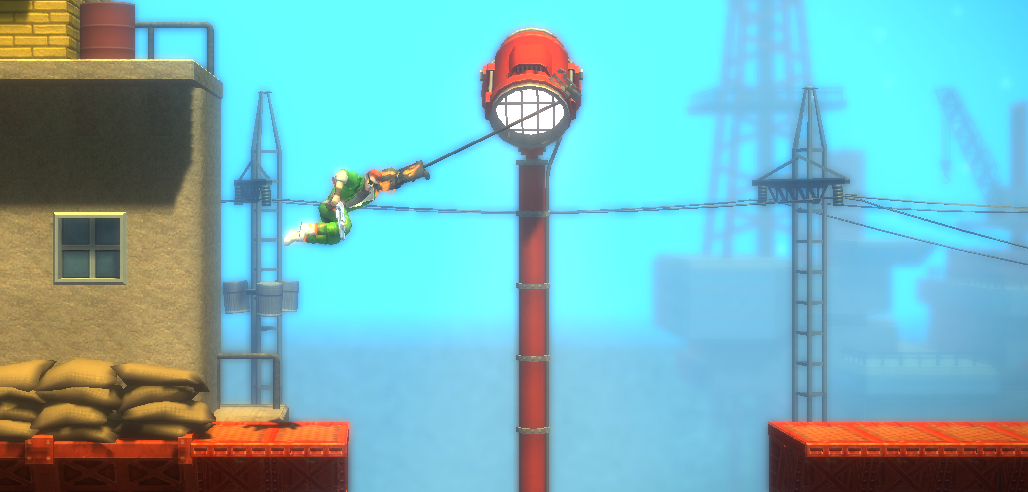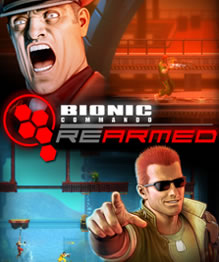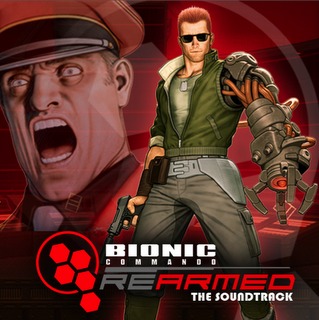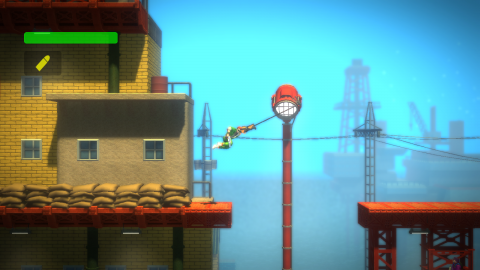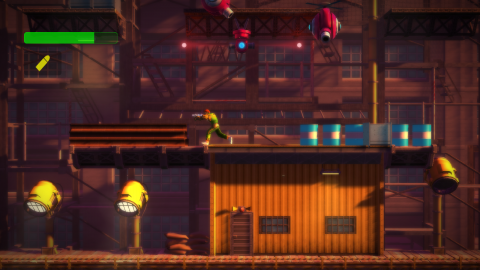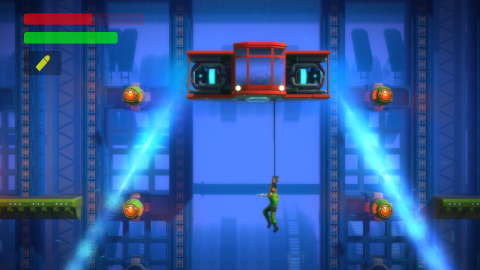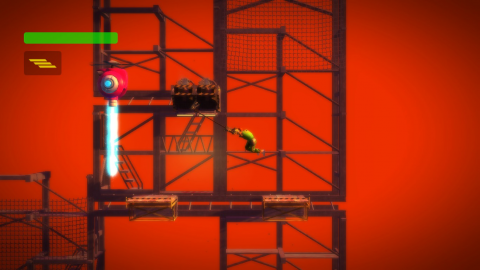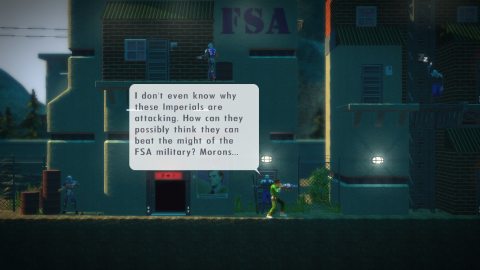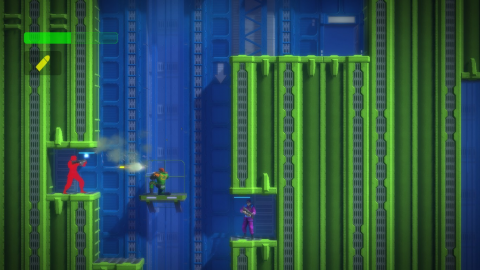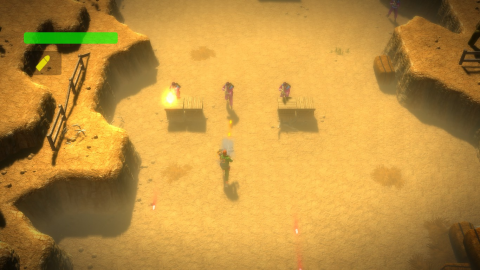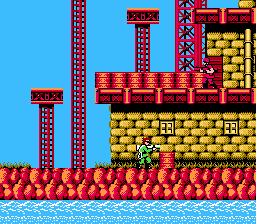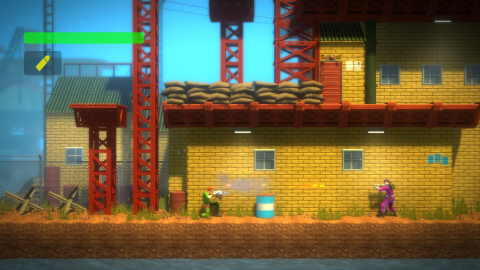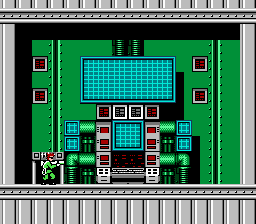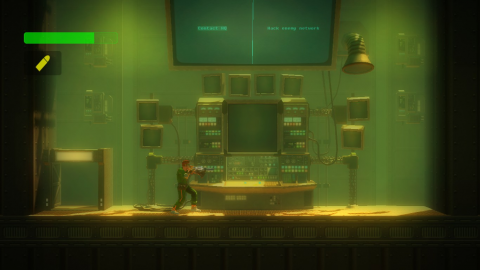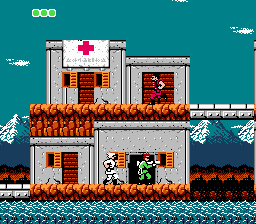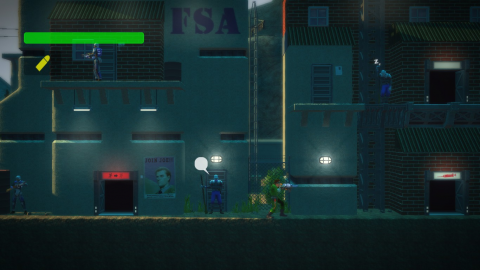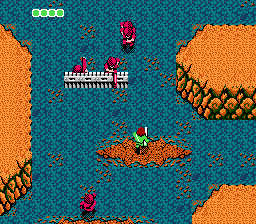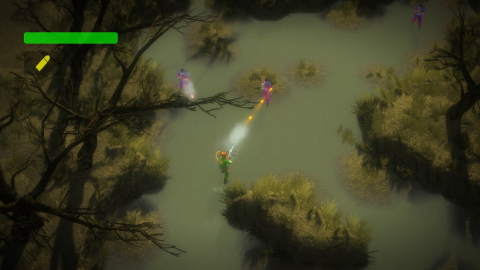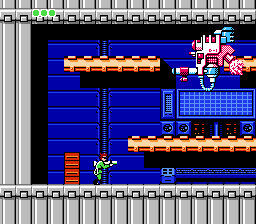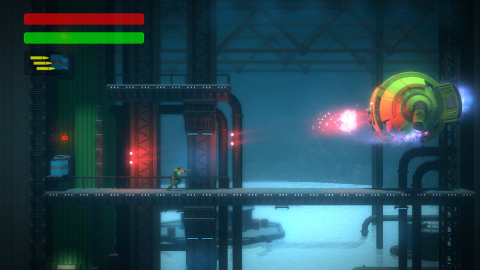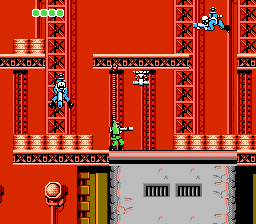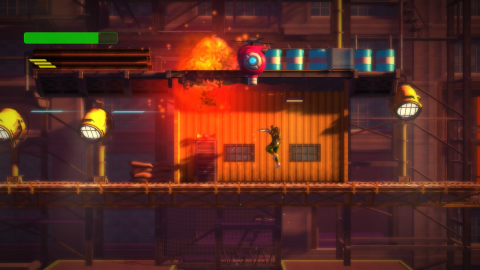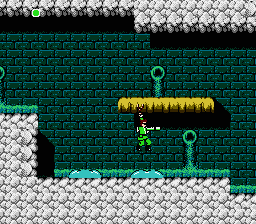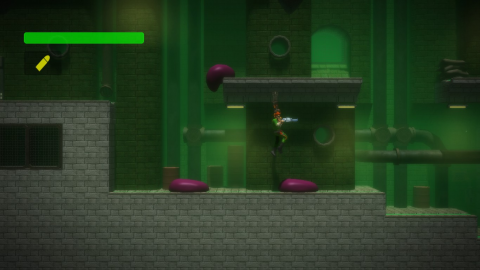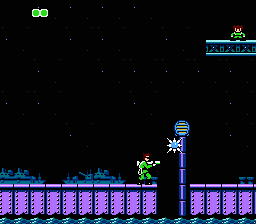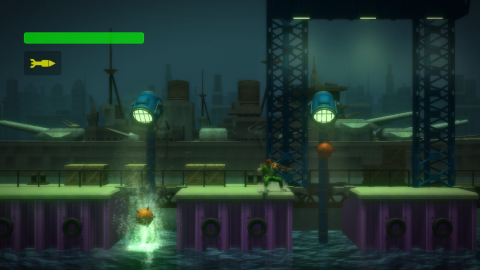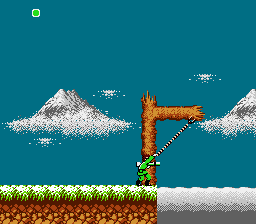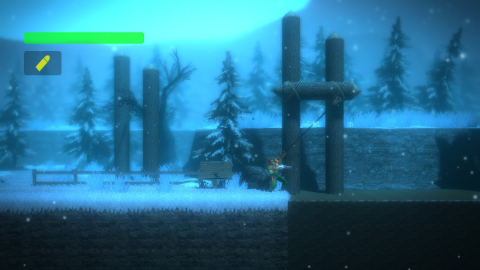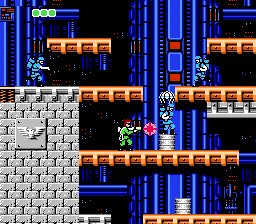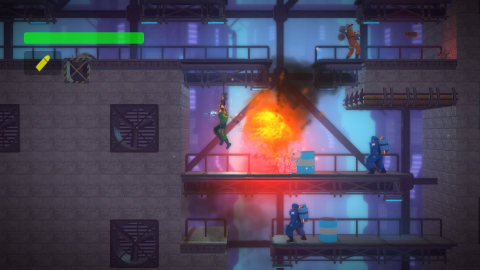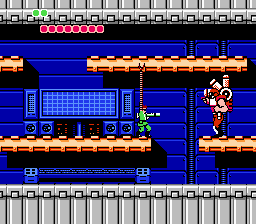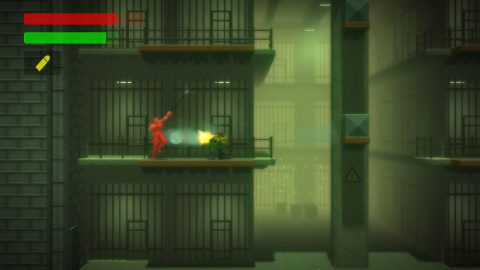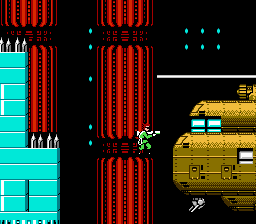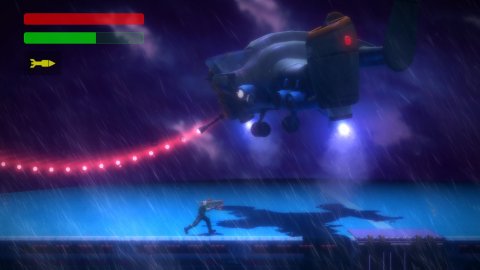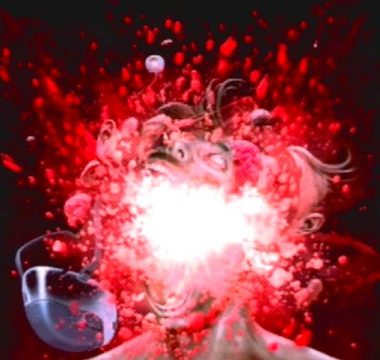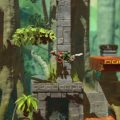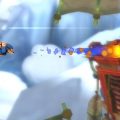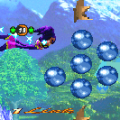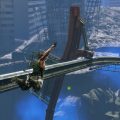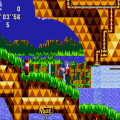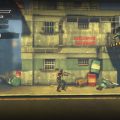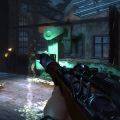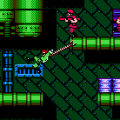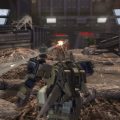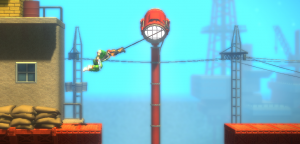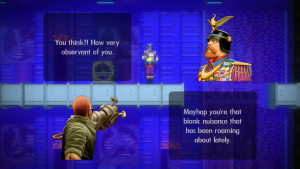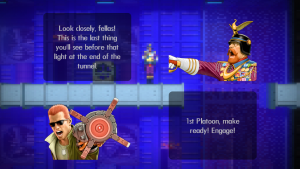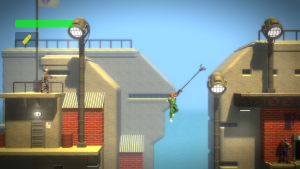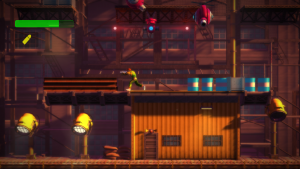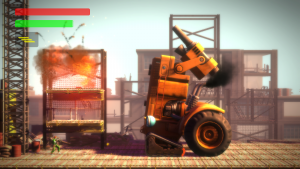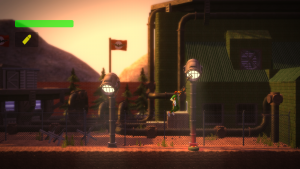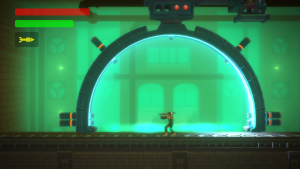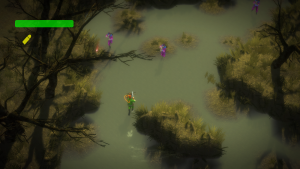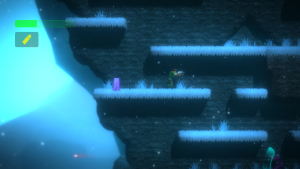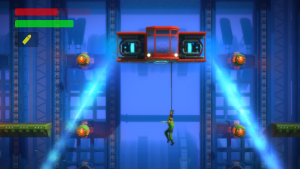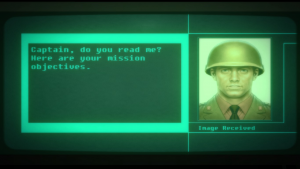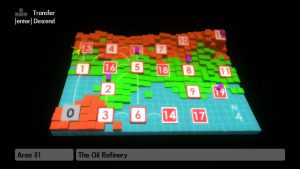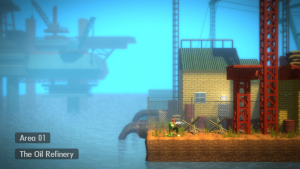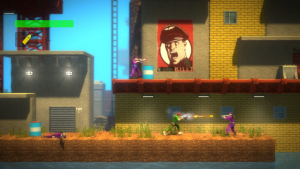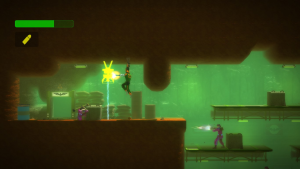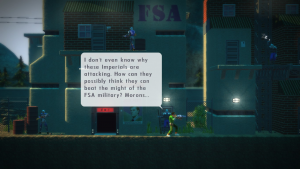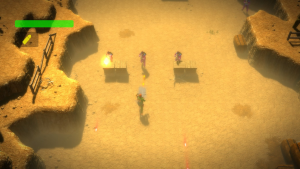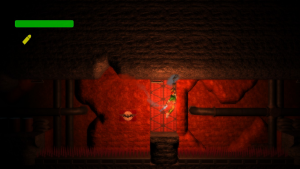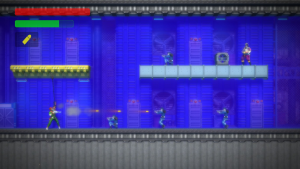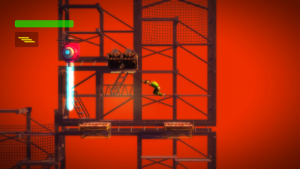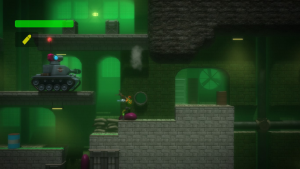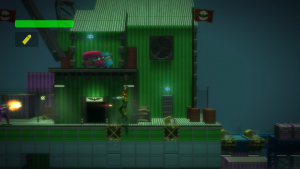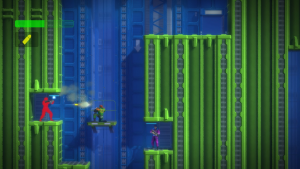With the series languishing for nearly a decade after the somewhat flat Elite Forces, Capcom focused on their more popular series and explored new projects in the meantime. Then, in 2008, Capcom decided to bring their action classics back into the light again for a new generation to enjoy. Bionic Commando would officially be resurrected with a brand new entry, fully in 3D on the PS3 and Xbox 360.
In order to cater to older fans who might not be onboard with a new 3D game, Swedish development team GRIN and Capcom of Japan producer Ben Judd treated longtime fans of the original with Bionic Commando Rearmed, a fantastic revival of a treasured NES favorite. Unlike the GB Bionic Commando, which had all new stages and a few new bosses but kept all of the items the same, Rearmed does the opposite – it keeps the basic structure of the NES original, but adds all new weapons, alters the gameplay significantly, includes many new features to appeal to gamers both old and new, and delivers one of the most impressive 2D packages ever developed.
The basic premise is unchanged from the NES game, but the story has been expanded by a great deal. On paper, it’s the same as the original, with the Federation (now known as the FSA: The Federal States of America) fighting against the Imperials, who have discovered the Albatross project from the original Badd architects. However, by simply revising the text and building on the dialogue, the story feels as different as it does familiar. Spencer has far more of a personality now, coming off as the awesomely typical action hero who talks smack to his enemies and playfully chats with his helicopter pilot, Haley. For example, a delightful exchange against a war machine pisses Spencer off to issue the ultimatum: “Next stop: The Junkyard. Population: You!” Communications with allies are less riddled with typos, and wire-tapped talk sessions with the enemies are simply hilarious, even making in-jokes to please longtime fans, including appearances of the “get out of here, you nerd!” and “about to explod” lines. One area even warns the player to wear hard hats, and includes a pixellated image of a Met, the ubiquitous hard hat wearing bad guys from Mega Man.
The gameplay is kept in 2D, but every single thing modeled in the game is 3D, running at a silky smooth 60 frames per second. There are amusing little details, such as Rad nodding his head towards the camera after he lands from his parachute, or enemy soldiers’ bodies hanging around for several seconds before plummeting off the screen. The move to a widescreen presentation allows for a zoomed out field of view, which makes it easier to see what you’re supposed to be swinging towards. Shinkiro, the legendary artist know for his work on SNK games like Fatal Fury and The King of Fighters, has provided character portraits for the dialogue scenes. Even more than before, Kilt looks like a lot like M. Bison.
All of the game’s original music has been remixed, and the project’s director, Simon Viklund, arranged them in a style that can best be described as steady techno beats with a definite old-school flavor. The general pace of each piece is decidedly slower than their originals, with the percussive beats heavily emphasized.
The overhead enemy assault phases have a different piece of music though, based the original Commando theme from Rob Hubbard’s Commodore 64 rendition. Even cooler, there are some “prelude” areas – like the opening screen before you enter a base, or when you’re entering into a boss’ room – where you can hear the thumping bass of the music, but not the actual melody. It makes it sound like you’re at the doorway of the most awesome dance rave.
Beyond the graphics and music, the basics have not changed, but there are tweaks to the controls that make it feel a little faster. This time around, the arm mechanics are more fluid and easier to control. It is very possible to fire the arm straight out horizontally in midair. This makes it easier to attach to platforms where a little more distance is required to make it a safe grab. Additionally, the arm is now more of an offensive and defensive tool, as you can use it to pick up barrels, use them to block, and toss them for what is often an instant kill if they happen to hit an enemy soldier.
Many of the game’s items have been updated, and the arsenal is far more balanced than in the original. The bullets that you can collect from enemies in order to extend your lifebar are now gone in place of a simpler health system. Rad kicks off his mission with a well-developed health bar that takes varying amounts of life loss depending on the type of attack. Enemies randomly drop small or large green spheres that recover health, as well as blue spheres that increase the player’s score. Unlike the NES game, continues are unlimited and do not need to be picked up from the overhead stages. You can now bring all weapons into each stage, and the game won’t let you enter a stage if you don’t have the right chip, which is the remake’s equivalent of the communicators.
The wiretapping has changed too, as you need to play a brief hacking minigame by guiding a ball through a 3D cube. If you fail the game, enemies don’t paratroop into the room, but instead you set off alarms throughout the stage where seemingly decorative doors reside. The doors keep opening to dog you with a constant flow of soldiers, which is indeed good motivation to try and not blow hacking jobs.
The arsenal is very different from the original game – the Bazooka fires explosive missiles, and the Machinegun fires bullets at an obscenely high rate. New weapons include Grenades, which can be tossed over enemy cover; a Plasma Rifle, which is similar to the default Revolver, with a quicker rate of fire but weaker; the Shotgun, which is useful for close quarters combat; and the Vector Cannon, which fires reflecting lasers. Bullet weapons do more damage to humans, while laser weapons are more effective against machines. Each of these can be made better through upgrades, which are hidden off of the beaten path in some levels. There’s also the Power Claw, which makes the arm into a more deadly machine than ever before. Without it, Rad can still pick up barrels and throw them at enemies as previously mentioned. With the Power Claw’s addition, Rad can pick up enemy soldiers and throw them at enemies, or use their unfortunate bodies as human shields!
All of these new weapons will be very useful indeed, as while Rad’s learned some new tricks, so have the Imperials. This is some of the best programmed artificial intelligence in a 2D action title. For starters, most of them can take much more damage. For example, the basic soldiers in the game slowly pace around until you get near them, then they go into combat mode, retreat from you, and take shots from afar.
There are a few enemies from the original that did not make it into the remake (such as the mutant spiders and moths from Area 3, plus the giant Venus fly traps have been replaced with standard bear traps), but their omission can be forgiven, seeing how the boss battles have been greatly improved. You can’t run past them anymore and just destroy the core, as they need to be dealt with. Some bosses have returned, while others are entirely new and rather impressive to behold in action. All bosses require many uses out of your bionic arm, like grabbing barrels and then chucking them at the boss to deal damage. The concept of the Giant Soldier (the hulking bionic boss that would slam you into him with his three bionic arms) has been entirely redesigned to make him a bit less giant and a lot more cunning. Named Gottfried Groeder, the Imperial Champion, he only has one bionic arm and puts it to as good use, swinging around the room and blasting you with energy shots.
In regards to the end of the game, Master-D is known as “The Leader”. (In Japan, however, his name is still “Master D” – the translated title is “The Resurrection Plan of Master-D.”) He’s still clearly Hitler though, and he actually looks more menacing than the original, seeing how his skin tone seems a lot more fitting for a long-dead man. He talks smack, calls you a “damn fool,” and threatens you with the power of the Albatross. Then the Albatross rises and takes its place in the sky; not as a giant laser cannon, but as a titanic floating fortress of death.
The developers probably took a cue from the Game Boy Bionic Commando for this one, in which the Albatross was the entire final level from there. However, this level is entirely new, creating an original final challenge that will daunt the best of gamers. While it spares the ungodly “swing below the jet thrusters” bit, it’s still really evil in its own right.
In the final battle, Haley shows up to see how you’re doing when her chopper is unceremoniously blown up. She dies, but not before giving you the Bazooka upgrade, which allows you to control your rockets manually. Note Haley’s first three letters of her name, her situation, and what she gives you. She is Rearmed’s rendition of Hal, the dying soldier who gave you the Hyper Bazooka needed to ultimately kill Hitler/Master-D/The Leader in the original game.
Instead of the confrontation against the chopper being a “hit or miss” situation, it’s now a full-fledged boss fight, where you have to guide a controlled rocket into the cockpit window. You need to do this a certain amount of times, and the last shot that ultimately finishes him off leads to… the explosion. The camera shows a close-up of his cranium bursting (and splattering on the camera), then zooming in and repeating it twice, with artwork detailing the event in its gory glory. This game received an M-rating, and it’s here that it justifies itself. It’s sad that this scene was censored for the Japanese and certain European releases, because it makes the brutal final level all worthwhile.
Rearmed offers four different difficulty levels: Easy, Normal, Hard, and once you’ve beaten the game once on any difficulty, Super Hard becomes unlocked. Strangely, several months after the game was release, GRIN published a patch which totally screwed with the game’s difficulty levels. The Easy and Normal modes now totally omit the most difficult segments of the final level, you respawn close to where you die, and lives are infinite. You also have more control over the arm, as you can begin swinging again after coming to a stop. Most of this was entirely unnecessary.
The game can be a massive challenge for any lone gamers, so if you’re looking for any assistance, bring along a friend and run through with the two player cooperative mode! A second Bionic Commando can join alongside you and take on the Imperials as an army of two. Both players have their own lifebar and three lives each, and if either dies, they respawn almost instantly. Both players act independently of each other, and the screen splits when the two move too far apart. The enemies are more numerous and the bosses more tenacious, sometimes altering their attack patterns to require that players work together.
There are other modes to round out the main game. This includes a competitive multiplayer mode, similar to Super Smash Bros., as up to four players are put in an enclosed arena and must blast the hell out of each other. There are four playable characters: Rad, Super Joe, Generalissimo Killt and Gottfried Groeder, each with different attributes. There are also Challenge Rooms, over 50 in total unlocked over the course of the main game, which challenge your arm swinging skills even more than the main game.
There is so much awesomeness in this remake. It embodies the spirit of old-school gaming, still alive and bursting with exuberance in the modern era of video games. It feels as new as it does familiar, expanding upon everything that made the original one of the best games of the era.
Rearmed was released for the Xbox 360, PlayStation 3, and PC, with all three being basically identical, though the PC version has extra challenge rooms. There’s also a Java mobile phone version that’s just a slightly stripped down port of the NES game with some slightly enhanced graphics, some of the character art of Rearmed, and some awkward controls.
Screenshot Comparisons
